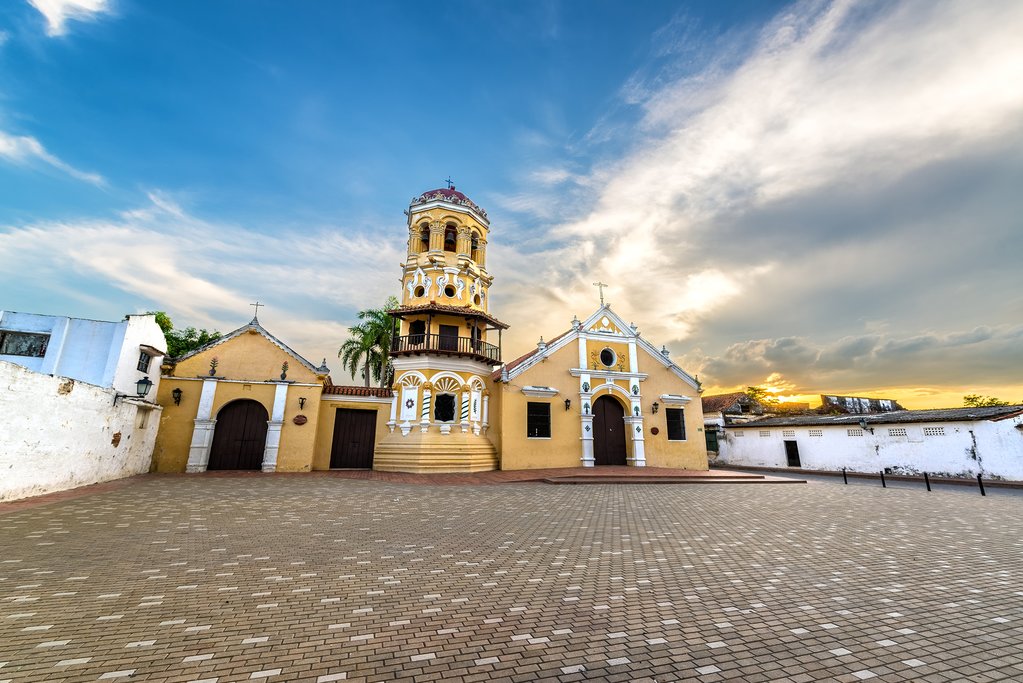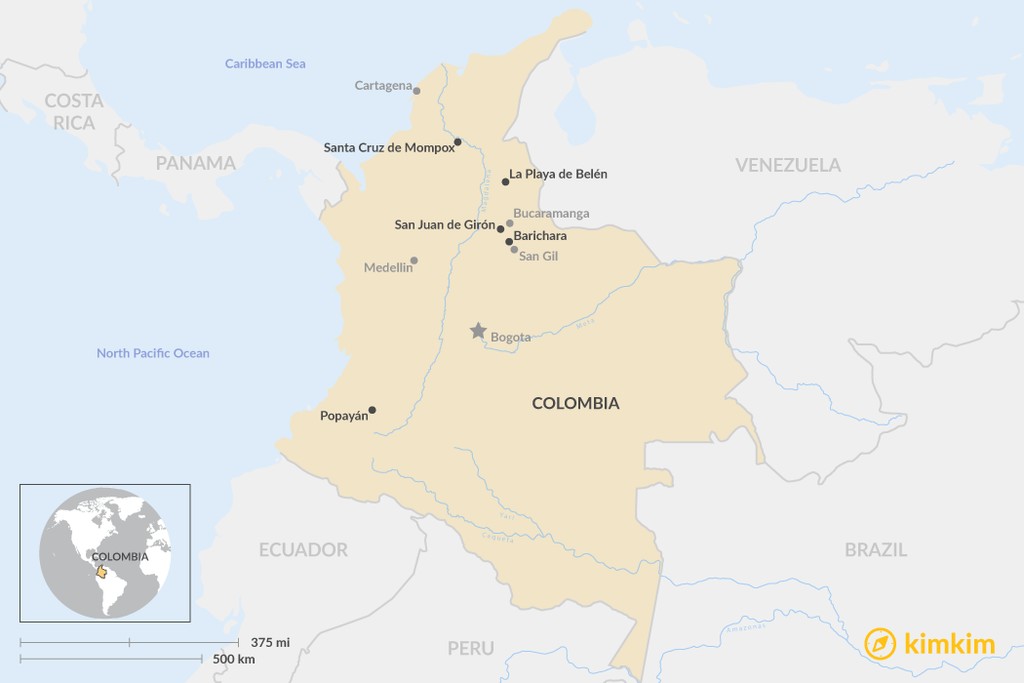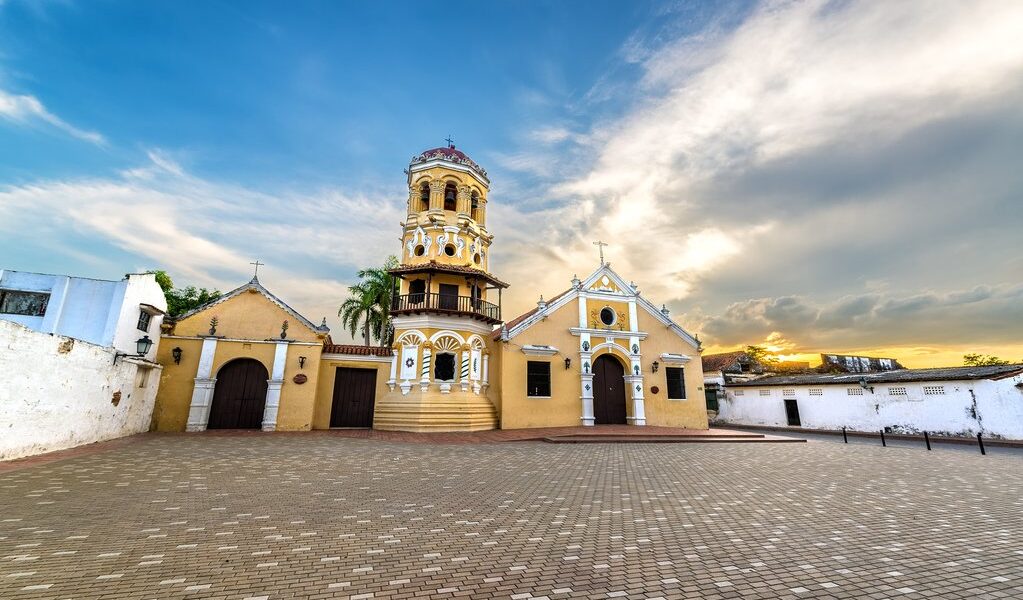
The Spaniards came to Colombia in the early 16th century with dreams of gold and visions of El Dorado. After the new country won its independence from Spain in 1819, the colonialists were finished, but they left behind a legacy that’s still seen today in Colombia’s many well-preserved colonial towns. This article lists the most unique throughout the nation.
## Exploring the Enchanting Colonial Cities of Colombia
Colombia, a land of vibrant culture, stunning landscapes, and rich history, is home to a treasure trove of colonial cities just waiting to be discovered. Beyond the bustling metropolises and popular tourist destinations, lies a collection of charming towns, each with its unique character and captivating story. These cities, steeped in history and brimming with local charm, offer a glimpse into Colombia’s colonial past and a chance to experience the country’s authentic culture. Journey with us as we delve into the allure of these hidden gems, starting with the intriguing La Playa de Belén.
### La Playa de Belén: An Oasis of History
Nestled in **Norte de Santander**, on the northernmost reaches of Colombia’s vast **Santander Department**, lies the captivating town of **La Playa De Belén**. Its name, literally translating to Bethlehem Beach, presents an immediate irony. For unlike its biblical namesake or the image conjured by “beach,” this inland village in the eastern heartland of Colombia is noticeably devoid of sandy shores. This curious misnomer adds to the town’s mystique, setting the stage for an unexpected adventure. Often overlooked by mainstream tourist routes, La Playa de Belén offers a truly unique experience. It is arguably the least-visited colonial town on our list, promising solitude and the opportunity to immerse yourself in its tranquil atmosphere. Venture here, and you are likely to find yourself among the few travelers exploring its historic streets, offering a unique perspective on Colombian life untouched by mass tourism.
The undeniable centerpiece of this compact town is its meticulously preserved colonial center. Picture yourself wandering along cobbled streets – just three in total, each telling tales of centuries past. These pathways converge at the heart of La Playa de Belén: a quaint central plaza. The plaza’s focal point is a magnificent church, its twin domed belltowers reaching towards the sky, a testament to the architectural grandeur of the colonial era. The church’s imposing presence creates a serene atmosphere, inviting contemplation and admiration.
For a truly unforgettable vista, journey to the outskirts of La Playa de Belén and embark on a short hike to the local cemetery. This may sound unconventional, but trust us, the experience is surprisingly rewarding. Far from being somber, the cemetery is a peaceful haven adorned with bright white crosses and meticulously kept tombstones. It exudes a sense of tranquility and reverence, offering a unique glimpse into the town’s history and cultural traditions. More importantly, the cemetery serves as a natural vantage point. From here, you can marvel at breathtaking panoramic views of La Playa de Belén and the surrounding countryside. The rolling hills, lush greenery, and picturesque landscape create a stunning backdrop, making the hike well worth the effort.
Venture just beyond the perimeters of La Playa de Belén, and you’ll discover the extraordinary **Los Estoraques Unique Natural Area**. This expansive 640-acre protected park is a geological wonderland. Here, nature has sculpted towering rock formations over millennia. Wind and rain, patient artists of erosion, have carved these natural monoliths into breathtaking shapes. The result is a landscape that evokes images of gothic towers, ancient castles, and the remnants of mythical fortresses lost to the annals of time. Walking amidst these colossal formations is a humbling experience, a testament to the power of nature and the enduring beauty of the natural world. This park is an absolute MUST for anyone with a passing interest in nature, history, or photography.
Reaching La Playa de Belén typically involves a journey through the larger town of **Ocaña**, situated approximately 45 minutes away. However, travelers arriving from the bustling city of **Bucaramanga**, the capital of Santander Department, have an alternative. Northbound buses departing from Bucaramanga can drop passengers off at the crossroads leading to La Playa de Belén, just before reaching Ocaña – a convenience made possible upon request. The bus journey from Bucaramanga to this drop-off point typically spans around five hours. Furthermore, buses also traverse this route from the vibrant Caribbean towns of **Mompox** and **Valledupar**, with an approximate travel time of five hours as well. So, it’s easy to incorporate La Playa de Belén into your travel itinerary.
### Mompox: A Caribbean Dream Frozen in Time
**Santa Cruz de Mompox**, more commonly known as Mompox, is a name whispered with a hint of reverence, a place that exudes a mythic quality. This romantic Caribbean backwater, nestled within the **Bolívar Department**, remains largely untouched by the relentless march of time. Its remote location has shielded it from the modern world, preserving its colonial charm and captivating ambiance. So far off the beaten path that few travelers get the opportunity to visit this charming gem, thus adding to its allure.
Founded in 1537 along the banks of the mighty **Magdalena River**, Mompox’s strategic location, inland from the Caribbean Sea, offered a sanctuary from the scourge of pirate attacks. This geographic isolation also resulted in minimal intervention from the outside world over the centuries. The isolation of Mompox has allowed the city to maintain its authenticity, preserving its historical buildings and rich cultural heritage. Walking through Mompox is like stepping back in time, an experience that will leave you spellbound.
A single day is often sufficient to soak in the essence of Mompox. Meander through its cobbled streets, absorbing the vibrant colors of the buildings, each adorned with artisanal wrought-iron doorways and windows, a testament to the city’s artistic heritage. Take a leisurely stroll along the riverfront, watching local life unfold against the backdrop of the Magdalena River. Be sure to sample the delectable *queso de cappa*, a local cheese with a subtle sweetness, readily available from street vendors. This local delicacy offers a taste of Mompox’s unique culinary traditions. Browse the intricate filigree jewelry crafted by local goldsmiths, a craft passed down through generations. The artistry and craftsmanship are a testament to the city’s rich cultural heritage. Consider embarking on a canoe tour of the nearby marshlands and mangroves, a chance to immerse yourself in the region’s natural beauty.
Arriving in Mompox can be a bit of an adventure in itself, but the journey is well worth the reward. Buses operate from **Cartagena**, traversing a five-hour route along the Caribbean lowlands. Alternatively, it is possible to connect by ferry from the town of **Magangué**, also located in Bolívar. Magangué offers connections to other parts of the Caribbean as well as **Medellín**. Furthermore, direct bus routes connect Mompox with Bucaramanga, although the trip takes approximately eight hours. Choose the route that best suits your travel plans, and prepare for an unforgettable experience in this colonial treasure.
A crucial detail to remember when planning your trip to Mompox is the climate. Mompox experiences consistently high temperatures, ranging from 80°F to 95°F throughout the year. However, the afternoon heat and humidity can be particularly intense. Embrace the local custom and indulge in a relaxing siesta around midday to escape the oppressive heat. After a short midday nap, you will feel fully refreshed for the afternoon and evening.
### San Juan de Girón: A Bucaramanga Outskirt
San Juan de Girón is a true gem, located on the banks of the **Río de Oro**, nestled on the outskirts of the modern metropolis of **Bucaramanga**. Its close proximity to Bucaramanga makes it an accessible and rewarding destination for travelers seeking a taste of colonial history. In fact, the town is conveniently situated just 5 miles west of “Buca,” making it feasible to visit even for a quick lunch, should a full-day trip not be possible.
The most striking landmark in Girón is undoubtedly the colonial church, the **Catedral del Señor de los Milagros**, with its pristine white-washed facade and imposing twin bell towers. It is an incredible photo opportunity. The cathedral stands proudly adjacent to the cobbled **Parque Principal**, which is a testimony to the town’s rich architectural heritage. The cathedral’s beauty is so captivating that many locals from Bucaramanga make the journey to Girón on weekends solely to attend mass here.
To delve deeper into the town’s rich history, consider embarking on a walking tour of the city. This informative excursion will lead you through Girón’s charming streets, revealing its hidden gems and sharing captivating stories from its past. Conclude your tour with a relaxing meal or a cup of coffee at a café on **Plazuela Peralta**, the historic site of Girón’s founding in 1631. And if your visit coincides with the Christmas season, prepare to be amazed by the incredible festivities and vibrant celebrations that engulf the town.
As previously mentioned, reaching Girón is incredibly convenient from Bucaramanga. Alternatively, you can seamlessly combine a visit to Girón with an excursion to the picturesque town of **Barichara**, located approximately three hours to the south. The combination of both is a great vacation for the avid traveler.
### Barichara: Beauty on a Hillside
Barichara is widely celebrated as one of the most beautiful towns in Colombia, a reputation well-deserved. Its meticulously preserved Spanish-colonial heritage and architectural splendor have earned it the prestigious title of Heritage Destination from the Colombian government. Even with its remarkable charm and historical significance, Barichara remains relatively untouched by mass tourism. Its slightly remote location ensures that it is rarely, if ever, overcrowded with visitors, allowing for a tranquil and authentic experience.
Life in Barichara centers around a small, exceptionally well-preserved plaza. Tree-lined walkways provide shade and tranquility, while a stone fountain offers a refreshing respite from the midday sun, especially for the local children who often gather here to cool off. The town’s architectural identity is defined by its exquisite stonework. An outstanding example of this craftsmanship is the impressive **Catedral de la Inmaculada Concepción**, situated just above the plaza. Its facade is constructed entirely of stone, while the interior showcases polished sandstone.
A short walk above the church will lead you to a *mirador* (lookout point) that offers breathtaking views of the **Suarez Canyon**. This stunning panorama is arguably one of the most impressive in all of Colombia. The canyon’s immense scale and dramatic landscape create an unforgettable visual experience.
Barichara also boasts a unique culinary heritage that is sure to pique your interest. You’ll quickly notice the word *hormiga* appearing frequently on menus throughout the town. Translated, this means “ant.” While it may sound unconventional, these insects are a popular and traditional snack in Barichara. Specifically, locals consume *hormigas culonas*, or fat-bottomed ants. These ants are often fried and salted, resulting in a taste that is surprisingly similar to popcorn. However, you can also find them incorporated into more elaborate dishes in some of the town’s upscale restaurants, cooked into flavorful sauces.
Beyond the town itself, Barichara offers a wealth of exciting activities in the surrounding countryside. Embark on a horseback riding adventure through the canyon, descending into the **Río Suarez Valley**. Alternatively, opt for a refreshing hike from town, immersing yourself in the region’s natural beauty. The most popular hiking trail is a two-hour jaunt that follows a scenic path originally used by the indigenous Guane tribe. This trail begins at the highest point of Barichara and leads to the village of **Guane**, a sleepy pueblo that seems to have been forgotten by time. For those seeking more adventurous pursuits, head to nearby **San Gil**, a hub for adventure sports such as river rafting, paragliding, and mountain biking.
Reaching Barichara is possible via a six-hour drive north from Bogotá or a three-hour drive south from Bucaramanga. Many travelers choose to establish their base of operations in San Gil, as Barichara is conveniently located a mere 20-minute drive northwest of it via scenic mountain roads.
### Popayán: The White City
If your travels lead you to the **Cauca Valley** in southern Colombia, be sure to include **Popayán** on your itinerary. This city, nestled in the **Cordillera Oriental** section of the Andes Mountains along the Pan-American Highway, holds a significant place in Colombian history. Popayán was one of the first major settlements in Colombia, founded by the Spanish conquistador Sebastián de Belalcázar in 1534. Its well-preserved city center is a treasure trove of colonial architecture. As you wander through its wide cobbled streets, you’ll be captivated by the churches, stone bridges, and terra cotta rooftops that have defined Popayán since its earliest days.
Popayán is easily accessible, making it a convenient destination for travelers. It is a three-hour drive south from the Argentine salsa capital of **Cali**. Furthermore, Popayán’s airport is located a mere 20-minute walk from the city center. This makes air travel a seamless and efficient way to reach the city.
Take a leisurely stroll through the historic central quarter, stopping at the major landmarks along the way. A particular highlight is the elegant **Cathedral Basilica of Our Lady of the Assumption**, prominently situated on the corner of **Caldas Park**. Built in the French style around 1900, this architectural masterpiece features tall colonnades and a soaring 131-foot-high dome. The cathedral is a sight to behold, its grandeur reflecting the city’s rich history and cultural significance. Popayán becomes particularly festive during Easter week, hosting the largest religious processions outside of Sevilla, Spain.
From Popayán, you can embark on several excursions to explore the surrounding Cauca Department. A popular destination is **Parque Nacional Puracé**, located approximately two hours outside of the city. This national park is home to the snowcapped **Volcán Puracé**, which dominates the region with its towering height of 15,243 feet. Visitors can embark on multi-day hikes around the volcanoes and indulge in the area’s rejuvenating geothermal pools.

B-346

